Having gone back and forth about what to do with the 1/350 USS Texas I have. I initially had wanted to just backdate to June 1944 configuration but now I have been looking at either a full backup to 1917, or its 1930's configuration.
Has anyone attempted this.
The hull work to get back to it's original hull is less a task as is the one distinctive feature of US battleships before WWII - the cage masts.
I've found two 3D printed and one photo-etched full mast (in a phot-etch detail set) but I'm not sure if any would work as they appear to be for a later class. But then again at 1/350 would it be that apparent? Any suggestions?
The interwar period would be simpler - mostly removing the extra guns and such from the 1942 & 1945 updates.
The pre-Treaty battleships served in their original & then the rebuilt configurations for much longer than their WWII guise. It's a shame that so few battleships are available in their early configurations.
Thanks
Mike
You are viewing the archived version of the site.
Go to modelshipwrights.com for the current dynamic site!
Go to modelshipwrights.com for the current dynamic site!
Hosted by Steve Joyce
Backdating USS Texas to WWI Configuration
saransk

Joined: September 15, 2010
KitMaker: 84 posts
Model Shipwrights: 28 posts

Posted: Tuesday, December 18, 2018 - 06:58 AM UTC

ChurchSTSV

Joined: September 20, 2017
KitMaker: 350 posts
Model Shipwrights: 175 posts

Posted: Tuesday, December 18, 2018 - 08:56 AM UTC
Paying attention to this thread!
Quincannon

Joined: June 22, 2018
KitMaker: 275 posts
Model Shipwrights: 273 posts

Posted: Tuesday, December 18, 2018 - 09:38 AM UTC
Michael: You sure have more ambition than I do. There was someone on I believe Steel Navy, or Model Warships that did what you contemplate a good while back, with Arizona. You may want to check out their galleries.
I agree with you that it is a shame that plastic model companies don't produce anything USN in either WWI or Pre-Dread days.
My personal favorites in 1/350 are destroyers, and you could say the very same thing about them. Many Fletchers, and all of the Sumners and Gearings spent a lot more of their service life in the Cold War, and yet we have nothing in the way of plastic models in 1.350 to represent those periods of service. You can find some in resin of course.
I would also give my eye teeth for a pre-dread Virginia, my home State, and where my children and their children live.
Good luck on this project, and like Charlie I will be paying close attention.
I agree with you that it is a shame that plastic model companies don't produce anything USN in either WWI or Pre-Dread days.
My personal favorites in 1/350 are destroyers, and you could say the very same thing about them. Many Fletchers, and all of the Sumners and Gearings spent a lot more of their service life in the Cold War, and yet we have nothing in the way of plastic models in 1.350 to represent those periods of service. You can find some in resin of course.
I would also give my eye teeth for a pre-dread Virginia, my home State, and where my children and their children live.
Good luck on this project, and like Charlie I will be paying close attention.

surfsup

Joined: May 20, 2010
KitMaker: 1,230 posts
Model Shipwrights: 1,212 posts

Posted: Tuesday, December 18, 2018 - 10:50 AM UTC
Watching this one will be fun......Cheers Mark
Posted: Tuesday, December 18, 2018 - 12:03 PM UTC
I believe you are going to have to modify the superstructures as well as removing weapons and masts. The Texas is a much beefier ship in 1944 than she was in 1917.
This will be a most interesting build if you take it on.
Mark
This will be a most interesting build if you take it on.
Mark


LZ32-TX

Joined: December 28, 2015
KitMaker: 34 posts
Model Shipwrights: 28 posts

Posted: Tuesday, December 18, 2018 - 08:57 PM UTC
This is gonna be a very interesting build regardless of which time period you build her as.
Are you going to try and fix the torpedo blister? There's a pretty good guide on doing this here
Are you going to try and fix the torpedo blister? There's a pretty good guide on doing this here
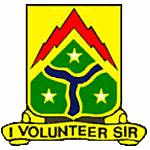
1.90E_31

Joined: December 24, 2004
KitMaker: 252 posts
Model Shipwrights: 89 posts

Posted: Wednesday, December 19, 2018 - 12:23 AM UTC
Hi Mike,
The first thing you need to consider going back to a 1917 fit on that kit is the complete removal of the blister from the hull. That was not added until the 1925-26 refit. This link will give you an idea of what the hull would look like:
http://www.shipmodels.info/mws_forum/viewtopic.php?f=60&t=151981
Also, under the bridge is the rebuild casemate for the 5"51 cal. guns. that would also need to be removed. The 1917 fit is a much cleaner ship than the refitted 1926 version, not to mention all of the small weapons that are on the 1944 version. Finally, the bridge is far more sparce than the 1944 version, so you will have to locate the plan/profile to find those platforms. From what I remember, it looks very similar to what you see in the 1921 Arizona photos. Hope this helps.
Jon Warneke
Commander Models, Inc.
The first thing you need to consider going back to a 1917 fit on that kit is the complete removal of the blister from the hull. That was not added until the 1925-26 refit. This link will give you an idea of what the hull would look like:
http://www.shipmodels.info/mws_forum/viewtopic.php?f=60&t=151981
Also, under the bridge is the rebuild casemate for the 5"51 cal. guns. that would also need to be removed. The 1917 fit is a much cleaner ship than the refitted 1926 version, not to mention all of the small weapons that are on the 1944 version. Finally, the bridge is far more sparce than the 1944 version, so you will have to locate the plan/profile to find those platforms. From what I remember, it looks very similar to what you see in the 1921 Arizona photos. Hope this helps.
Jon Warneke
Commander Models, Inc.

1.90E_31

Joined: December 24, 2004
KitMaker: 252 posts
Model Shipwrights: 89 posts

Posted: Wednesday, December 19, 2018 - 12:49 AM UTC
Mike,
These two photos show decently what I am talking about with the blister. The first is the configuration of the Trumpeter kit:
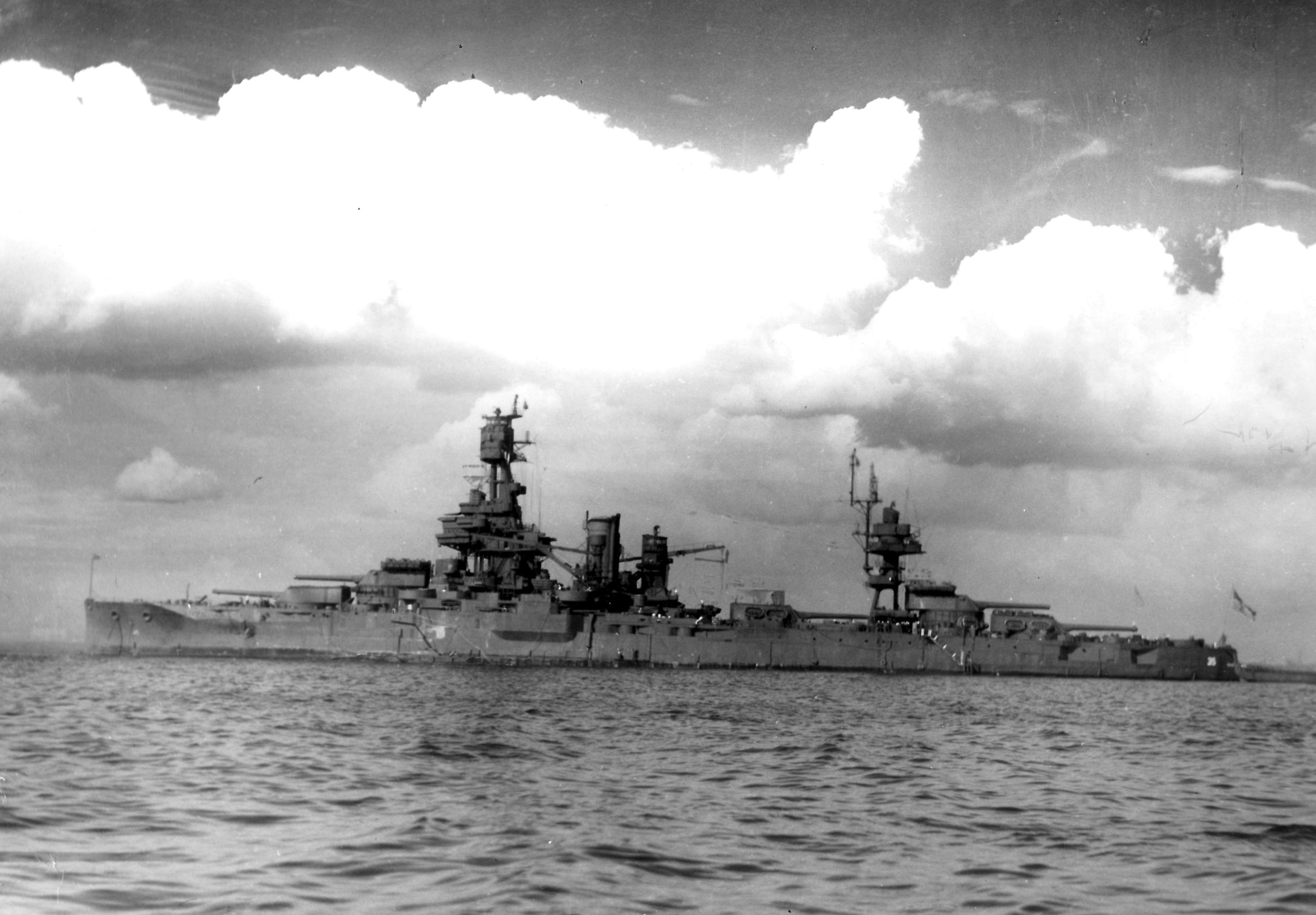
The second is a picture of Texas about 1919:
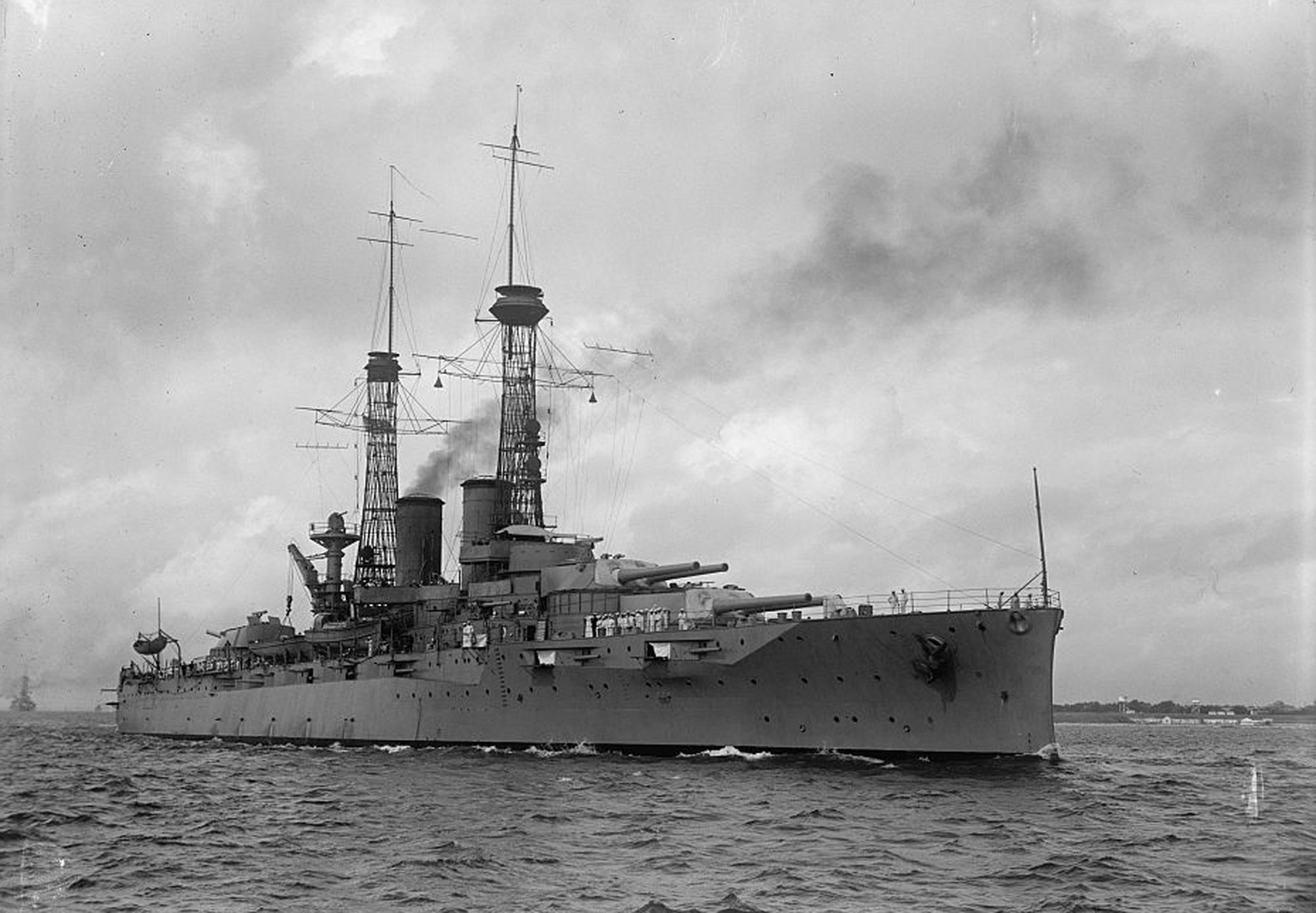
Also, the blister goes from just below the casemate deck in the hull all the way to the bottom of the hull. This picture from 1925 shows the extent of it:
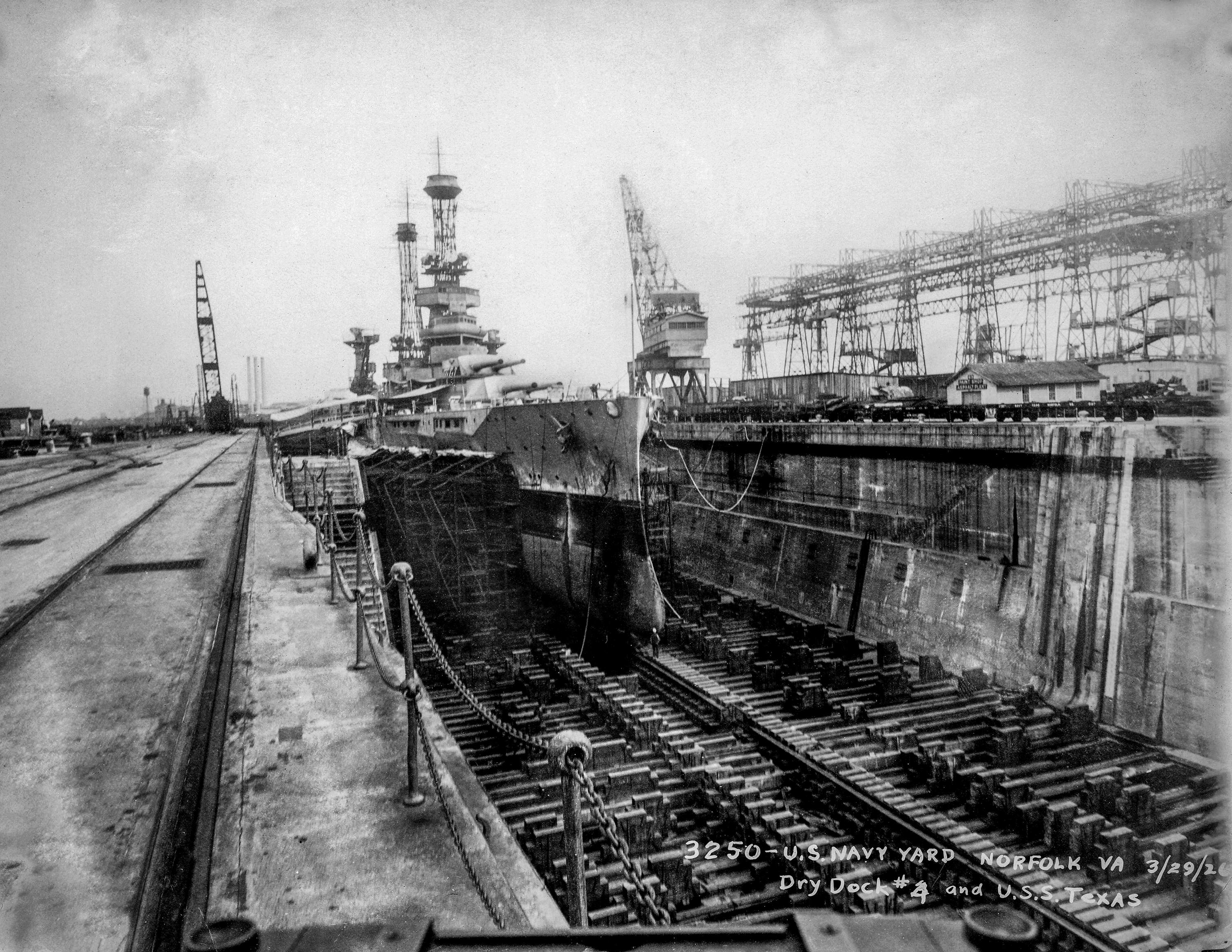
The scaffolding covers the area that was blistered. It's a fairly extensive piece of work to go back from the kit.
Jon
These two photos show decently what I am talking about with the blister. The first is the configuration of the Trumpeter kit:

The second is a picture of Texas about 1919:

Also, the blister goes from just below the casemate deck in the hull all the way to the bottom of the hull. This picture from 1925 shows the extent of it:

The scaffolding covers the area that was blistered. It's a fairly extensive piece of work to go back from the kit.
Jon
Posted: Wednesday, December 19, 2018 - 12:22 PM UTC
I'll be watching this one!
I've embarked on a similar course but, in 1/700.
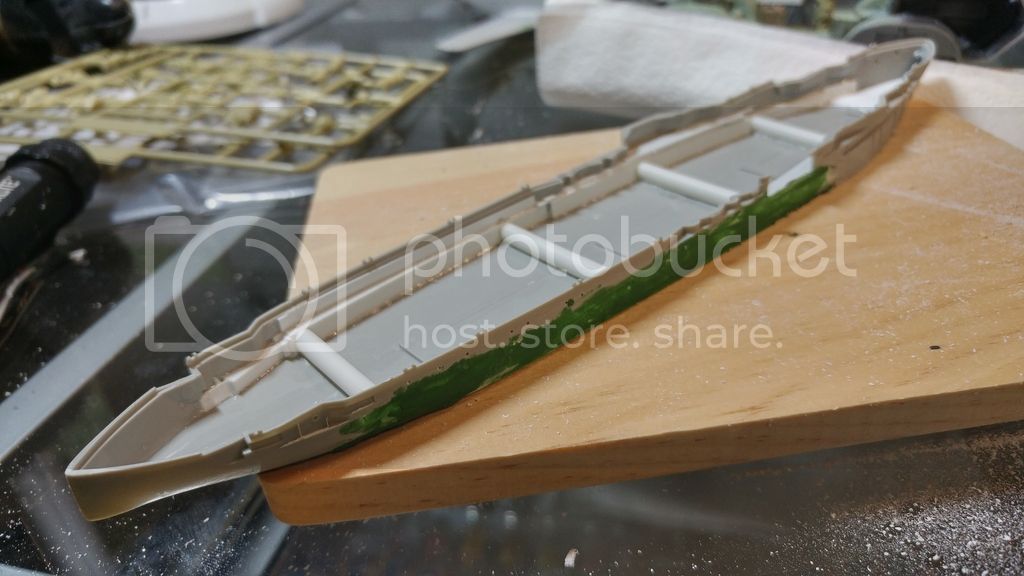
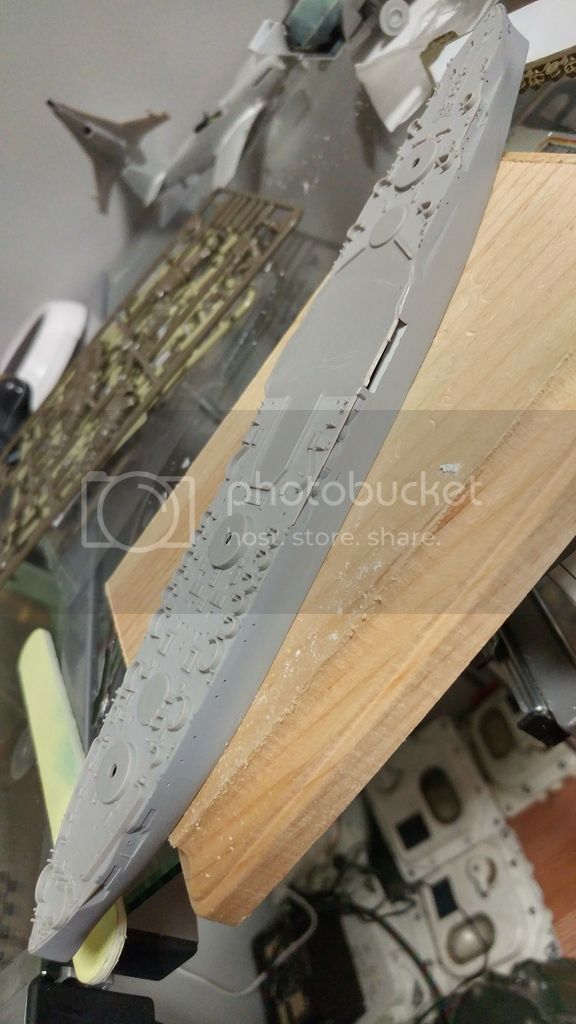
I've embarked on a similar course but, in 1/700.


saransk

Joined: September 15, 2010
KitMaker: 84 posts
Model Shipwrights: 28 posts

Posted: Thursday, December 27, 2018 - 09:36 AM UTC
I've found a couple of pre-1926 plans for the New York class that have very good top views. Although there was some rebuilding of the first level superstructure, it retained the basic outline which helps.
Between the outline plans, the NavSource photos, and the Squadron USS Texas book, the details on the very sparse ship, typical of all the US dreadnoughts, is very apparent.
The blisters will be removed after I've built the hull sides on the interior where they would've been. At that point it becomes like a vacform kit - you sand the excess off and then smooth it out. Of course I could just fill the bilges with 'bondo" and use a small power sander.
Except for the cage masts, almost all of the deck fittings are available. I'll have to do a little searching for those big air funnels. I suspect there are 1/350 3d versions out there.
She was in the original configuration for almost as long as she wasn't. And the look of the various battleships of the early dreadnought/super-dreadnought period was really sleek.
Between the outline plans, the NavSource photos, and the Squadron USS Texas book, the details on the very sparse ship, typical of all the US dreadnoughts, is very apparent.
The blisters will be removed after I've built the hull sides on the interior where they would've been. At that point it becomes like a vacform kit - you sand the excess off and then smooth it out. Of course I could just fill the bilges with 'bondo" and use a small power sander.
Except for the cage masts, almost all of the deck fittings are available. I'll have to do a little searching for those big air funnels. I suspect there are 1/350 3d versions out there.
She was in the original configuration for almost as long as she wasn't. And the look of the various battleships of the early dreadnought/super-dreadnought period was really sleek.
TracyWhite

Joined: January 18, 2005
KitMaker: 527 posts
Model Shipwrights: 464 posts

Posted: Friday, December 28, 2018 - 02:58 PM UTC
Quoted Text
These two photos show decently what I am talking about with the blister. The first is the configuration of the Trumpeter kit:
Hey Jon - just a FYI but you can't embed images from Navsource in posts on other sites. You can link directly to images, but Navsource has put blocks on displaying them on other websites as they were having to pay for all of the extra bandwidth and server time it created.
saransk

Joined: September 15, 2010
KitMaker: 84 posts
Model Shipwrights: 28 posts

Posted: Monday, January 07, 2019 - 08:33 AM UTC
I've done a test run using the scratchbuilding technique for the cage masts and, although very tedious, once I get the jig set up correctly it shouldn't be any worse than doing individual track links. I think I've found a really good material - steel guitar strings. Much stiffer than the same size brass rod and one string will provide enough for almost a whole mast. And they come in nice sizes - a .09 #1 E may be perfect.
Right now I can't find a really good plan to figure out the dimensions of the base and top diameters. I've looked at both on-line and purchase sources for dreadnought era plans and US ships don't appear to go back that far.
Anyone have a source for the mast dimensions - I suspect most of the early classes - through the Pennsylvania class - had similar sized masts.
Thanks
Michael
Right now I can't find a really good plan to figure out the dimensions of the base and top diameters. I've looked at both on-line and purchase sources for dreadnought era plans and US ships don't appear to go back that far.
Anyone have a source for the mast dimensions - I suspect most of the early classes - through the Pennsylvania class - had similar sized masts.
Thanks
Michael
Quincannon

Joined: June 22, 2018
KitMaker: 275 posts
Model Shipwrights: 273 posts

Posted: Monday, January 07, 2019 - 09:57 AM UTC
Seeing your post I did some checking knowing that I had seen some cage masts in 1/350 offered as aftermarket products. There are a lot available from Free Time Hobbies/Blue Ridge Models in 1/700 scale and some of some fairly obscure USN BB's that did not last long enough for WWII, but 1/700 does not help this project a bit.
Model Monkey has both fore and aft cage masts for the Tennessee and Colorado Classes, in 1/350, and Free Time/BR has a Tennessee/Colorado as well.
Looking at my 1/1250 models of the WWI era Texas and Colorado, the shape of the cages are totally different, and looking further into my other WWI era BB's The New Mexico's seem to be the place that the shape really changed into larger masts at the base, and less pencil like. BB's before Texas and New York also have some minor differences as well.
I hope that your trip to the music store will reap rewards. I will be watching carefully, as this is a most interesting project
Model Monkey has both fore and aft cage masts for the Tennessee and Colorado Classes, in 1/350, and Free Time/BR has a Tennessee/Colorado as well.
Looking at my 1/1250 models of the WWI era Texas and Colorado, the shape of the cages are totally different, and looking further into my other WWI era BB's The New Mexico's seem to be the place that the shape really changed into larger masts at the base, and less pencil like. BB's before Texas and New York also have some minor differences as well.
I hope that your trip to the music store will reap rewards. I will be watching carefully, as this is a most interesting project
 |










